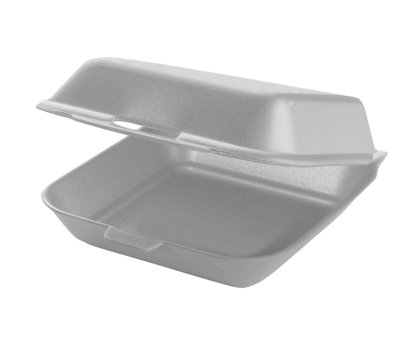The joy and exuberance that dogs bring to our lives often come with a curious nature that can lead to some potentially hazardous situations. One such scenario is your dog getting hold of and ingesting household objects, like a dry sheet, a silica packet, or a piece of styrofoam. This lightweight, seemingly harmless material is found ubiquitously in our households – in packaging materials, disposable to-go containers from restaurants, and insulation boards, meaning dogs have an increased likelihood of encountering it. As such, it’s crucial for dog owners to recognize the potential danger of styrofoam ingestion and know how to respond promptly.

The Dangers of Styrofoam Ingestion
Ingesting styrofoam can pose both physical and chemical dangers to dogs. Physically, styrofoam can cause obstructions in the dog’s gastrointestinal tract.1 Depending on the size and shape of the ingested piece, it could potentially lead to choking or severe intestinal blockages. Chemically, styrofoam is made from polystyrene, a petroleum-based plastic. While generally considered non-toxic in small amounts, large amounts or regular consumption could potentially lead to adverse effects due to the accumulation of plastic constituents in the body.
Recognizing Symptoms
Below are symptoms to watch for in case your dog consumed styrofoam:
- Excessive Drooling: Increased saliva production can indicate stress or discomfort in your dog. This might present as a steady dribble or wetness around the mouth and chin area.
- Vomiting: A dog’s body may try to rid itself of the undigestible styrofoam by inducing vomiting. This could manifest as unproductive retching or the ejection of recently ingested food along with fragments of styrofoam.
- Loss of Appetite: If your dog is usually enthusiastic about meal times and suddenly shows disinterest or reluctance to eat, it could be a sign of gastrointestinal upset.
- Lethargy: A sudden lack of energy or enthusiasm for activities they usually enjoy could be a symptom. Your dog may seem unusually tired, sleep more than normal, or show a general lack of motivation.
- Changes in Bowel Movements: Look for irregularities in your dog’s feces such as unusual color, consistency, or frequency. The presence of styrofoam in the stool could also indicate that your dog has ingested it.
- Signs of Abdominal Pain: Your dog may display signs of discomfort, such as restlessness, whining, or yelping, particularly when their abdomen is touched. They might also adopt unusual positions, such as the “prayer position” with their front end down and rear end elevated, which can indicate abdominal discomfort.
Taking Action
If you suspect your dog has ingested styrofoam, the first step is to remain calm. Panicking will not help the situation and may stress your pet. If your dog is choking or seems extremely distressed, contact a vet immediately. For less severe cases, monitor your dog closely for any symptoms. However, it’s always safer to contact your vet, describe the situation and follow their guidance.
What to Remember: Dogs and Styrofoam
In a world where styrofoam is a common material, it’s imperative for dog owners to understand the potential risks. Commonly found in packaging and tableware, styrofoam can cause physical obstructions and various effects of the contained chemical if ingested by your pet. The ability to swiftly recognize symptoms of distress, such as vomiting, appetite loss, or abdominal pain, is key to timely intervention in order to prevent more serious health issues. In such situations, maintaining composure, monitoring your pet, and knowing when and how to seek professional help can make a significant difference in safeguarding your dog’s health.
Citations
Mechanisms of motility changes during acute intestinal obstruction in the dog, (1984).
https://journals.physiology.org/
Frequently Asked Questions
-
While a small amount of styrofoam may pass through a dog’s system without causing harm, it’s not guaranteed. Monitor your pet closely for any signs of distress and contact a vet to be safe.
-
The time it takes for a dog to pass styrofoam can vary based on factors like the dog’s size and the amount ingested. It can take anywhere from 24 hours to a few days. If your dog does not pass the styrofoam or shows signs of distress, contact your vet.
-
No, dogs cannot digest styrofoam. It’s a non-biodegradable material that can cause blockages in a dog’s digestive system.

